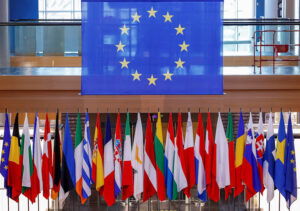TOURISM Secretary Ma. Esperanza Christina G. Frasco said she hopes that a proposed ASEAN visa will encourage multiple-destination stops by visitors to the region, similar to travelers in Europe holding Schengen visas.
“The ASEAN tagline is ‘A destination for every dream.’ And the ASEAN visa certainly is part of that dream,” Ms. Frasco said in a statement sent over the weekend.
She hopes the scheme will “unify ASEAN as a destination in terms of the strength of its natural assets, its unparalleled warmth and hospitality,” she added.
She said that the proposal is similar to the Gulf Cooperation Council (GCC) visa for the Middle East and the Schengen visa for Europe.
“As a Minister of Tourism, it is a proposition that I have tried to make at every opportunity. I am glad to hear similar interest from our fellow ASEAN nations, and we are very hopeful that the subject matter will again come up as the Philippines hosts ASEAN in 2026,” she added.
She said that Southeast Asian countries can collaborate while maintaining “healthy competition.”
“Competition is always very healthy, but collaboration is healthier in a sense that ASEAN coming together… would really benefit all of our countries,” she said.
“We are grateful for our existing collaborations with countries such as Thailand with whom we have recently signed an implementation program for our Memorandum of Cooperation on tourism,” she added.
However, she noted a decline in Chinese visitor arrivals to the Philippines.
“The lesson that we learned from that is to really be able to diversify our dependency into other markets as well,” she said.
“And so now, we are targeting markets such as the Middle East and the GCC, as well as India. And of course, to further strengthen our source markets from South Korea, Japan, the United States, as well as Europe,” she added.
These efforts, she said, resulted in a 500-800% growth in tourism arrivals from the Middle East and the GCC.
The Philippines welcomed 2.1 million visitors in the first four months, down 0.82% from a year earlier.
South Korea accounted for a 22.25% market share, down 18% year on year.
The other top source markets in the first four months were the US, Japan, Australia, and Canada.
“Tourism from South Korea has been declining as the economy faces the challenges from the global tariff uncertainty, which combined with a weak South Korean won to mean (travelers preferred) Japan due to the weaker yen, making the destination attractive,” Mastercard Economics Institute said in an e-mail.
To address this, it said that the Philippines could host more sports or music events to attract more tourists.
“Having more major sporting or music events can be a good way to attract more tourists. Being featured in TV shows may also be a good way to attract tourists, as we saw with The Glory, which attracted strong growth of visitors from Japan to Korea,” it added.
Mastercard Chief Economist for Asia-Pacific David Mann said the Philippines could also look at how it can further improve the visiting experience for tourists.
“I think the key thing for sure comes down to how other people’s experiences were when they visited and how they were reporting back — that word of mouth, the sharing on social media … really makes a very big difference,” he said.
“The more positive stories that really gain a life of their own, the stronger the inflows, the stronger they can even become later,” he added.
He noted, however, that improving the ease of getting through the border and adding more direct flights will not happen overnight.
“A lot of the infrastructure, hard and soft, needs to be built out as well. But I think the confidence people have and the passion that they have to want to go for a particular draw … seem to be one of those extra things that can really make a very big difference,” he added. — Justine Irish D. Tabile

